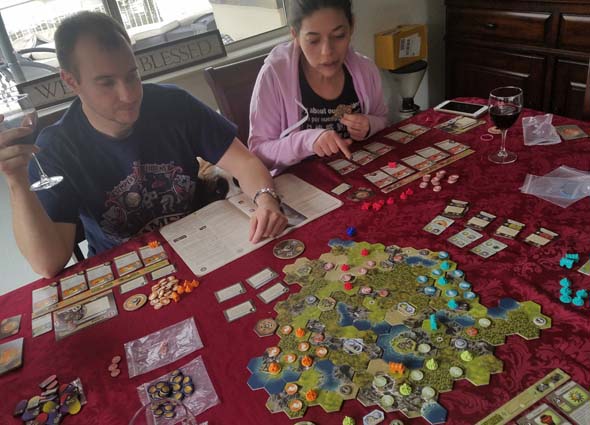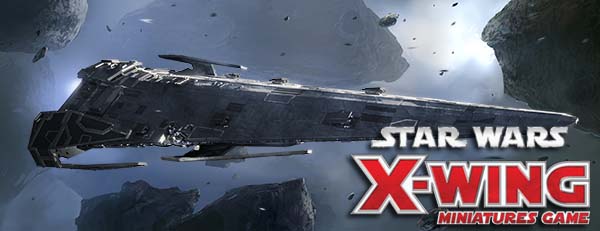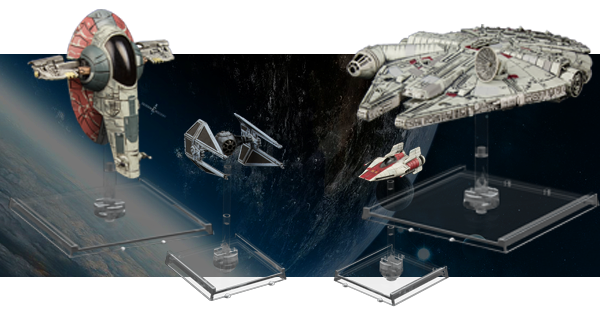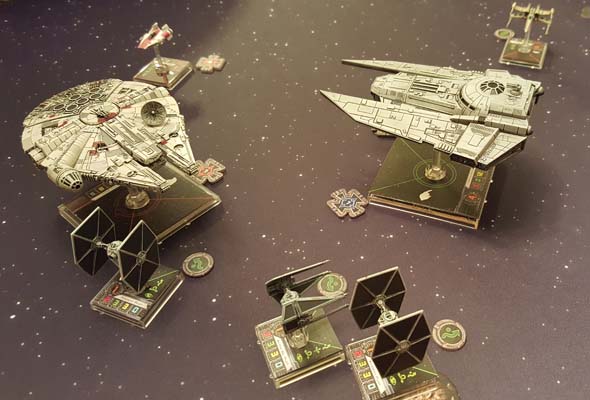
Sid Meier's Civilization computer game seems ripe for conversion into a board game. The PC game is, after all, basically just a computerized board game that plays out on a grander scale. Sid himself was inspired by many classic board games, including Risk and Axis & Allies. Fantasy Flight has already taken a stab at trying to distill the core mechanics of Civ down into a digestible board game when they released Sid Meier's Civilization: the Board Game back in 2010. I really like that game, even though it is a bit bloated and unwieldy. Attempting to directly translate Civ's mechanics down into board game form unsurprisingly results in a fairly complicated game that takes a very long time to learn and play.
Fantasy Flight's approach this time around seems to be to develop an elegant board game, and then apply the Civilization license onto it. The result is a board game that feels much more distant from the computer game, but which plays much more smoothly as a board game.
Civilization, streamlined
Perhaps the biggest problem with the older Civilization board game is the game length and amount of downtime. Games could run for over five hours, and the fact that each player resolved their entire turn phase (city management or army movement) before moving onto the next player meant that you could end up sitting for 20 to 40 minutes, twiddling your thumbs and waiting for other players to resolve their turns. That is one of my biggest peeves with a lot of epic games: too much downtime.

A New Dawn is a very elegant game.
A New Dawn addresses that problem by having each player take only a single action in each of their turns. There are no phases; just take an action from your focus bar and then move on to the next player. Turns, therefore, are very quick, turnaround time is very short, and the game moves along at a rapid pace. This, ironically, serves to better maintain the "one more turn" addictive nature of the computer game. You might find yourself neglecting bathroom breaks for several turns because things are moving along so swiftly. Your turn is generally quick enough that you want to finish it before you step away or take a break, and other players' turns are so quick that you don't want to step away because you know it'll be back around to your turn in a few minutes.
Longer games with longer turns and more downtime can also often result in players outright forgetting what they were planning on doing by the time the turn gets back around to them. Either that, or the large amounts of moves and actions that the other players take changes the game state so much that, when your turn comes around, the thing you were planning on doing is no longer ideal -- if it's even possible.
That's rarely a problem in A New Dawn because each player does one thing on their turn, so the state of the board isn't radically changing between your turns. It's much more of a gradual change. That doesn't mean that other players can't disrupt your plans; they certainly can, especially when combat between players starts happening. It just means that you aren't going to be sitting there bouncing up and down in your chair waiting to pull off a spectacular move, only to have another player blow up all your plans at the last minute and leave you spending far too long wondering "What the heck do I do now?" when your turn starts... [More]
67fd088c-265a-4a60-939d-4c4027df3179|0|.0
Tags:Sid Meier's Civilization, Sid Meier's Civilization: A New Dawn, Sid Meier's Civilization the Board Game, Fantasy Flight, Firaxis, 2K Games, board game, strategy, empire-building, focus bar, cities, world wonder, technology, culture, war, barbarians, James Kniffen

This past couple years, my girlfriend and I have been getting very into the Star Wars: X-Wing miniatures game. We've also been converting some of our friends into avid players as well. After sitting on my shelf for several years with only a couple play sessions under its belt, the set has been getting played every few weeks with regularity. As such, we've also been investing more and more into additional expansions beyond the set that I initially bought. Late in 2016, my local board game store put its Corellian Corvette expansion on sale, so I went ahead and snatched up a copy of that huge, epic expansion ship. The following year, I went on to pick up the Imperial Raider huge expansion (also on sale)..
It took a while for these two ships to get much play though (seriously, they were sitting around for years), since they don't slot into the X-Wing core rules as easily as other expansions do. Playing with the huge ships requires increasing the scale of the X-Wing game considerably. The huge ships, by themselves, cost well over 100 fleet points. As such, the basic 100-point fleets go out the window for the epic-scale matches. Instead, 300 fleet-building points are recommended if any epic ships are in play. In addition, a larger play area is needed for most epic scenarios. If you bought a play mat for X-Wing, you might need to invest in a second mat as well (and they ain't cheap).
Contents
[More]
0b70eb42-0da6-473e-8f53-83e8d72a8fd9|1|4.0
Tags:Star Wars, Star Wars: X-Wing, Fantasy Flight, board game, miniatures game, dogfighting, Corellian Corvette, Tantive IV, Imperial Raider, TIE Advance, Y-Wing, B-Wing, TIE Bomber, play mat, scenario, campaign
As is the case with many kids who grew up in the 80's and 90's, I played many hours of Oregon Trail in the computer labs in elementary school. Some teachers even had to limit how many hours students could spend on that game, so as to make sure we were also playing the other math and language games available.
Now there is a tabletop card game adaptation of the original computer game. It's exclusively available at Target ... and apparently also on Amazon. It retails at $15, but I always seem to see it on sale for $10 or $12. So it's an inexpensive little game.
My seven-year-old proxy-daughter picked out this game for me as a birthday gift. She recognized it from the TV show Teen Titans Go!, which has an episode in which the characters act out the original computer game (and all die, of course). When I asked her what the Oregon Trail is, she responded "Everyone got dysentery.". So I asked if she knows what dysentery is, and she responded "It's where you poop to death." I guess the show has some educational value after all...
More an emergent narrative than an actual game
The game is simple to play. Each player is given a hand of trail cards and supply cards, and there's a stack of "Calamity Cards" that serve as the main challenge for the game. Players take turns playing a trail card from their hand or a supply card. The selected card's trail end must match up with the end point of the trail on the previous card in order for the card to be played. Most trail cards will require some kind of resolution. Some are river fording cards that require the player to roll a die in order to allow the party to proceed past the river or suffer penalties. Some are calamities that require drawing a card from the calamity deck and resolving its effects.
Most calamities can be countered with supply cards, but snake bites and dysentery are instant, unavoidable deaths.
Most calamities are unfortunate effects that require a die roll or a specific supply card to be played. If the effect is not resolved in time, a penalty occurs -- usually the death of the affected player. Some calamity cards (such as the snake bite or ubiquitous dysentery) will even kill a player outright, with no chance to avoid death.
The objective of the game is for the party to successfully pass 50 trail cards to travel from Independence, Missouri to Willamette Valley, Oregon. It's a purely cooperative game, so if any one surviving party member makes it to Oregon, then the entire group (including the dead players) wins the game. [More]
65386274-7868-482c-812c-58c6189114e8|0|.0
Tags:Oregon Trail, history, dysentery, cholera, death, wagon, wagon train, Target, board game, card game, Independence, Missouri, Willamette Valley, Oregon, computer game, Teen Titans Go!, Tales of the Arabian Nights, nostalgia

Earlier today, I served as a guest host for the Civilization podcast Polycast, episode 295. I joined regular hosts DanQ, Makahlua, MadDjinn, and TheMeInTeam. The episode covered a handful of topics, ranging from the new religion mechanics introduced by the fall 2017 patch, to a proposal for athletes to be a type of great person, the new Civilization: A New Dawn board game, to the issue of micro-transactions (or "Recurrent Consumer Spending" as Take-Two Interactive CEO, Strauss Zelnick calls it), and more.
If you missed the live broadcast, then the edited archive version will be released on PolyCast's website next Saturday (December 2). I'll update this post with a link once the archive is updated.
"Recurrent Consumer Spending"
"Recurrent Consumer Spending" was one of the primary topics of the previous episode (PolyCast #294), and so we discussed it again as part of a discussion on feedback from last week's episode. Micro-transactions (and loot boxes in particular) are a hot topic in gaming of late, especially after the fiasco that was EA's launch of Star Wars: Battlefront II. Games pundit Jim Sterling has made micro-transactions an almost weekly issue in his Youtube podcast The Jimquisition. Sterling has been comparing loot boxes to gambling for months, and recently, some European regulatory agencies have started to evaluate whether loot boxes should legally be classified as a type of gambling. As someone who has previously worked for a gambling company, I am aware of how compulsive impulses are used to keep gamblers addicted to a particular game, and I definitely believe that the current implementation of loot boxes in games like Shadow of War, Call of Duty, and Star Wars: Battlefront does try to capitalize on those same addictive impulses, and so should probably be regulated similarly to gambling. I don't want micro-transactions in my games at all, but I don't necessarily think that such things should be illegal per se. But they should be regulated, and I do think that the game boxes should clearly indicate to parents that the game includes "gambling-like elements" (or some other warning).
Jim Sterling has been making a fuss about micro-transactions and loot boxes for months.
WARNING: May not be appropriate for younger or more sensitive viewers.
More importantly (for me), however, is the concerns for what micro-transactions do to the actual game. Just last night, I spent something like 4 hours in Shadow of War grinding my character and orc captains up to a point that I could siege the castle in Act II. I played every side mission available in the chapter, and then still had to do some Nemesis missions, in order to get Talion up to level 20 and unlock the ability to assign a third uruk captain to my siege assault. That third captain was essential to get my siege level up above the level of the defenders. I'm not sure if that was necessary, but I didn't want to risk having my captains killed during the attack. I actually happen to really like Brûz The Chopper, so I didn't want him dying because my siege was under-leveled. This is just Act II! I can't imagine how grindy the game might become during the later acts! And all this extra grind in the campaign is a direct result of the inclusion of the game's War Chest (i.e. loot boxes). You can spend real-life money to buy random orc captains to use in your sieges or to defend your captured forts. So the whole game is balanced such that it's just enough of a grind to encourage people to spend money to speed things along by buying the War Chest.
Well, Take-Two CEO Strauss Zelnick has said that he wants every game in 2K's library to include "recurrent consumer spending". That would include my beloved Civilization... [More]
8f53a504-5bbb-4626-ba4a-56406fa073a4|0|.0
Tags:PolyCast, Civilization, Sid Meier's Civilization, Civilization III, Civilization IV, Civilization: Colonization, Civilization V, Civilization VI, Firaxis, podcast, DanQ, Makahlua, TheMeInTeam, MadDjinn, micro-transaction, gambling, Strauss Zelnick, Take-Two Interactive, 2K Games, Jim Sterling, Jimquisition, Middle-Earth: Shadow of War, Brûz The Chopper, board game, Sid Meier's Civilization the Board Game, Sid Meier's Civilization: A New Dawn

I really enjoy the Star Wars: X-Wing miniatures game, and have been playing it on and off for a few years now. Unfortunately, the core set is very lacking in variety, and so the game really needs to be expanded in order to be fully enjoyed. There's a myriad of expansions available, and they can be pricey. A single fighter ship expansion retails for $15, large ship expansions retail for $30-50, and the huge (epic) ships can cost as much as $90 or $100! If you get into this game, be prepared to spend money.
I never got into much of the Star Wars extended universe, so my interest in expansion ships has been mostly limited to content from the classic trilogy. This allowed me to be at least somewhat frugal in my early expansion purchases, but I still tried to find as much variety as I could. At the time of this review, I own (and have played with) the following expansion: Millennium Falcon, Slave I, Lambda Shuttle, VT-49 Decimator, X-Wing, A-Wing, TIE Fighter, TIE Advance, TIE Interceptor.
I also recently purchased the Corellian Corvette expansion (the foot-long huge ship that stands on two bases), but I've yet to have a chance to play it. I'm also interested in trying out the Imperial Raider, which (as I understand) is a ship that was conceived for the X-Wing miniatures game and then also ported into Armada. I also haven't played the "Most Wanted" expansion, which adds a third faction and could hypothetically allow for three-player games. I don't think that there's an official ruleset for a three-player deathmatch though, so even with a third faction, you'd probably just be playing in teams.
Small ships (fighters)
There's really not much to be said about the small fighter expansions, as they play (mostly) the same as the X-Wings and TIE Fighters that come packaged with the core set. Each ship comes with its own special abilities that add some nuanced differences to how they play, but they still play similarly at fundamental levels.

Be very aware of each ship's Pilot Skill, as the risk of collisions dramatically increases with more ships.
The biggest change (and most obvious ones) is that they allow for larger fleet sizes, which complicates the board and requires more careful management of your ships. With more ships in play, you have to be much more aware of what ships are where, what their respective pilot skills are (e.g. their turn order), and what kind of movements and abilities each possesses. Collisions become much more frequent and harder to avoid as more ships are added, and a careless player will probably also find themself running their own ships into each other -- especially if you're trying to fly tightly-packed formations. Of course, I've never run my own ships into each other ...
Perhaps the most obvious expansion is stand-alone X-Wings and TIE Fighters. These are a little bit more than a simple repackaging of the core game's components... [More]
335e38fd-7d74-43a5-be9f-9b9da0b74b65|0|.0
Tags:Star Wars, Star Wars: X-Wing, Fantasy Flight, board game, expansion, miniatures game, dogfighting, Millennium Falcon, Han Solo, Chewbacca, Lando Calrissian, YT-1300, Slave I, Boba Fett, Lambda Shuttle, VT-49 Decimator, X-Wing, Wedge Antilles, A-Wing, TIE Fighter, TIE Advanced, Darth Vader, TIE Interceptor, weapon arc, dice
|

| 12 | | | | | | | 60 | | 11 | | | | | | | 55 | | 10 | | | | | | | 50 | | 09 | | | | | | | 45 | | 08 | | | | | | | 40 | | 07 | | | | | | | 35 | | 06 | | | | | | | 30 | | 05 | | | | | | | 25 | | 04 | | | | | | | 20 | | 03 | | | | | | | 15 | | 02 | | | | | | | 10 | | 01 | | | | | | | 05 |
|